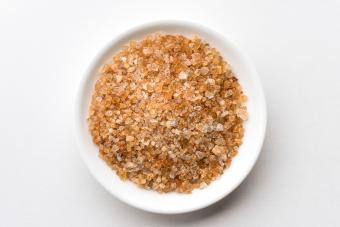
Xanthan gum is used in many gluten-free recipes. The powder is a natural, gluten-free compound that can replace gluten in many recipes. When mixed with water, xanthan gum forms a gel that binds ingredients together and provides a decent elastic texture for bread, cake, and other baked goods. It also forms air pockets that give bread and cakes their characteristic crumb texture. When used in liquid recipes, such as salad dressings, it helps keep the mixture blended and emulsified.
Xanthan gum is not the only ingredient that can stand in for gluten in these types of recipes. It is a pricy ingredient, and not everyone likes it. Baked goods made with it can have a gummy texture and slight aftertaste that may not appeal to some people. Others may have a sensitivity or allergy to xantham gum that can leave them feeling ill. There are xanthan gum substitutes that will work just as well. Finding the right substitute for xanthan gum may take a little patience and practice, along with trial and error. The end result will be well-textured foods that taste delicious and are good for you.
Agar Agar

Agar agar is derived from algae or seaweed found in Southeast Asia. This vegetarian gelatin can be purchased at local health food stores and online as a powder, flakes, or in sheets. In gluten-free recipes, it works as a binder and thickener for batter and dough. Expect to use twice the amount of agar agar as xanthan gum in your recipes.
Guar Gum

Guar gum is another natural gluten-free alternative to xanthan gum. This white powdery substance is similar in consistency to cornstarch. It is derived from a legume plant found in East India. Guar gum functions as a binder that works well in creamy dishes and sauces. However, it can have laxative properties in some people. Use three parts guar gum for every two parts xanthan gum called for in a recipe. If you have a sensitivity to xanthan gum, you may have the same reaction to guar gum.
Egg Whites

Egg whites are both a binder and a leavening agent, which means that not only can they be used to help bind foods together, but they can also help them rise. They also do not contain gluten. Egg whites make an excellent substitution for xanthan gum in cakes and quick and batter bread recipes. They do not work as well in kneaded bread. Use one egg white for every tablespoon of xanthan gum in a recipe. Keep in mind that your finished product will be very light and airy.
Chia Seeds

Chia is a flowering plant in the mint family. Its seeds are extremely high in omega 3s fatty acids and fiber and do not contain gluten. When mixed with water, the ground seeds become a thick gel similar to egg whites that can be used in gluten-free baking to help give structure to bread and pastries. Use a mixture of one tablespoon of chia seeds to three tablespoons of water to replace one tablespoon of xanthan gum. Increase your baking time by 15 minutes if you use this substitute.
Ground Flax Seed

You can also use ground flax seeds in gluten-free bread recipes instead of xanthan gum. Flax seeds come in a golden or dark brown color. You can use either type as a guar gum substitute. Whole flax seed should be ground before it is added to dough or batter. Use the same amount of flax seed as xanthan gum called for in the recipe, but mix it with two times the water. If a recipe calls for one tablespoon of xanthan gum, use one tablespoon of ground flax seed plus two tablespoons of water.
Psyllium Husk

Psyllium husk is a gluten-free ingredient that can improve the texture of gluten-free bread. It is usually sold as a dietary fiber supplement, but it is a terrific xanthan gum substitute for gluten-free baking. Psyllium husk gives bread great structure and can also help keep baked goods moist. Use twice the amount of psyllium husk powder as xanthan gum in your recipes.







